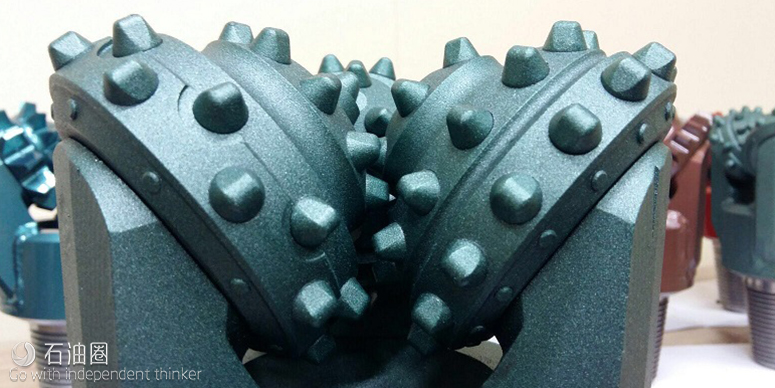Well X is a deepwater exploration well with a carbonate primary target. Traditionally, bit records from offset wells or fields have been the only main source of data for bit selection. Often, bit selection has been trial-and-error because of limited data availability. Now, however, rock‑strength-analysis (RSA) software is a requirement for prejob planning to select a bit. Using log data from offset wells, a bit-selection software based on unconfined compressive strength (UCMPS) calculations has been used to optimize the bit selection for Well X.
Comprehensive RSA for Bit Selection
RSA software generated a comprehensive formation-evaluation and bit-selection analysis for a drilling application. Mud logs from offset wells were used to interpret the rock type. Some electronic logs that have petrographic analysis capability, such as gamma-ray, compressional sonic, density, neutron, and resistivity analysis, quantified the rock appearance and percentage depth-by-depth. The RSA software provided 18 rock types to be analyzed, from sedimentary rocks, such as sandstone, claystone, and limestone, to hard igneous and volcanic rocks.
Bits were selected on the basis of their capability to drill a formation with a certain hardness. On the basis of that study, compressional sonic logs converted to shear sonic, combined with the formation type, can be used to calculate the UCMPS of the formation. Apart from drilling parameters, UCMPS is the main contributor to rate of penetration (ROP). UCMPS is also used to calculate abrasion and impact index of the formation. On the basis of the lithology to be drilled, rock UCMPS, formation abrasion, and impact index, the RSA application uses offset-well data from more than 12,500 wells to choose a fixed or roller-cone drill bit with an appropriate combination of cutting structure, gauge protection, hydraulic configuration, and other critical characteristics.
With the RSA software, formation characteristics from offset wells can be analyzed. To expand the scope of the formation analysis, several wells from surrounding fields in the same regional geology also have been correlated and analyzed.
A polycrystalline-diamond-compact (PDC) -bit selector in the RSA software considers the blade count of the bit, the cutter size, and the blade profile on the basis of the compressive strength, formation abrasion, and formation impact. The harder the formation is, the software will recommend fewer blades and smaller cutter sizes for the bit to improve durability. If the formation consists mostly of shale and claystone, bit-balling flags will be generated and the bit should have better hydraulic optimization to improve bit cleaning. To reduce the risk of having an undergauge bit because of abrasion, proper gauge protection should be added to the bit.
it and Bottomhole-Assembly (BHA) Optimization by Use of Dynamic Finite-Element Analysis (FEA) Modeling
After general bit-selection guidelines were obtained from the RSA software, an FEA-based modeling simulation was performed to check the dynamics of the drilling system with certain bits. This simulation is much more accurate than static BHA modeling because all of the components are modeled in detail individually. The simulation modeled the interaction between the cutting structure and the formation being drilled by using rock mechanics derived in the laboratory. The result of the simulation is the drilling behavior of all drillstring components, including vibrations, stress, torque, and even ROP prediction. The sequence of the analysis for each section is
- Several bit options were simulated for each section to contrast drilling dynamics. The best bit was chosen on the basis of stability and rate of penetration.
- After having the best bit option, the BHA was optimized by changing tool placing, stabilizers, and the spacing between the cutting structures.
- A drilling-parameter roadmap was then produced as a safe-drilling-parameter guideline to be applied in the field.
In this paper, bit optimization for 8.5‑in. and 6-in. sections is included. For the 8.5-in. section, two different bit designs were simulated with the base BHA to determine the most stable bit. The first bit is a PDC with six blades and a double row of 16-mm cutters. The second bit has a single row of cutters. .
The simulation was performed with set weight-on-bit and rotational-speed parameters at two different depths. On the basis of the RSA analysis, limestone with UCMPS of 15–20 kpsi and shale with UCMPS of 2–5 kpsi were set as the lithology to be drilled in the simulation. Lateral, axial, and torsional vibration; ROP comparison; and build/drop tendency generated from the PDC bit and measurement-while-drilling (MWD) tools were then plotted to find the most-stable bit option.
The simulation showed that the bit design with the single row of cutters (Bit 2) is more stable than the other bit design (Bit 1); the lateral vibration is much lower. These bits produced similar stick/slip trends, but Bit 2 has a slightly lower value. In terms of ROP, Bit 2 can drill generally faster, both in carbonate and shale formations, compared with Bit 1. The build/drop tendency plot showed that both simulated bits can maintain the verticality of the well.
To obtain a safe-drilling-parameter roadmap, thresholds were set for vibration. Even though Bit 2 generated lower vibration, the value still is considered high, especially the amount of lateral vibration at the bit. To minimize the vibration, BHA optimization is necessary.
The previous simulation with the base BHA created medium to high lateral vibration at the bit. This lateral vibration value can lead to cutter damage and drilling inefficiency if it lasts for a long time. The threshold for the vibration was set to medium to high levels. Several BHA options were simulated with the same parameters and drilling environment considered earlier. The resulting optimization consisted of changing the stabilizer size at the motor from 8⅜ to 8¼ in. and reducing the motor bend housing from 1.15 to 0.78°.
The simulation with Bit 2 and the optimized BHA resulted in a safe-drilling-parameter roadmap that considered the bit and all of the BHA components, such as the motor, stabilizer, and MWD tools.

 石油圈
石油圈
